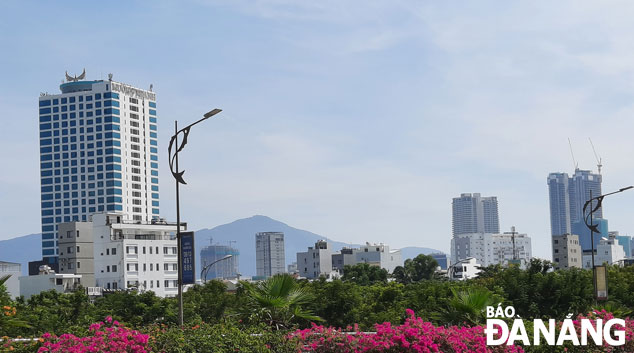Da Nang's GRDP likely to reach only 62,664 billion VND by late this year
Da Nang’s gross regional domestic product (GRDP) could be estimated at only 62,664 billion VND by late this year, according to the General Statistics Office of Viet Nam.
 |
| Picture taken at a corner of the burgeoning Son Tra District. |
The economy's scale could reach an estimated 101.233 billion VND at current prices.
The GRDP growth rate is likely to decrease by 9.26% when compared with last year. In detail, the service sector is predicted to plunge by 7.97%, whilst industry - construction down by 10.49%, the agro-forestry-aquaculture up by 2.57% and the taxes less subsidies on production plummeting by 15.94%.
With regard to this year’s local economic structure, the service accounts for 65.1%, whilst the industry - construction with 22.3%, the agriculture 2,2% and the taxes less subsidies on production 10,4%.
Besides, the annual GRDP growth rate recorded in Da Nang over the ongoing 2015 - 2020 period could decrease to only 4%.
In particular, the city’s average GRDP per capita by late this year is predicted to decrease to only 3,678 US$, much lower than the amount recorded in last year.
Da Nang has been ranked 16th in Viet Nam in the size of the economy, down one place from the 15th place in the 2016 – 2019 period.
The city is now amongst 12 Vietnamese localities with minus growth in the first half of the year, and one of the 5 localities with the lowest growth rate in the country.
Da Nang saw its gross regional domestic product GRDP for the first half of the year contract by 3.61% from the same period last year, the first time since it was recognised as a centrally-governed city on 1 January 1997.
The Covid-19 pandemic-sparked disruptions of global supply and value chains and services, especially the second wave of the coronavirus outbreak starting raging Da Nang late July, have adversely affected the city’s socio-economic performance as well as its ability to reach this year’s major development targets set by the municipal government.
By TRIEU TUNG- Translated by A.T